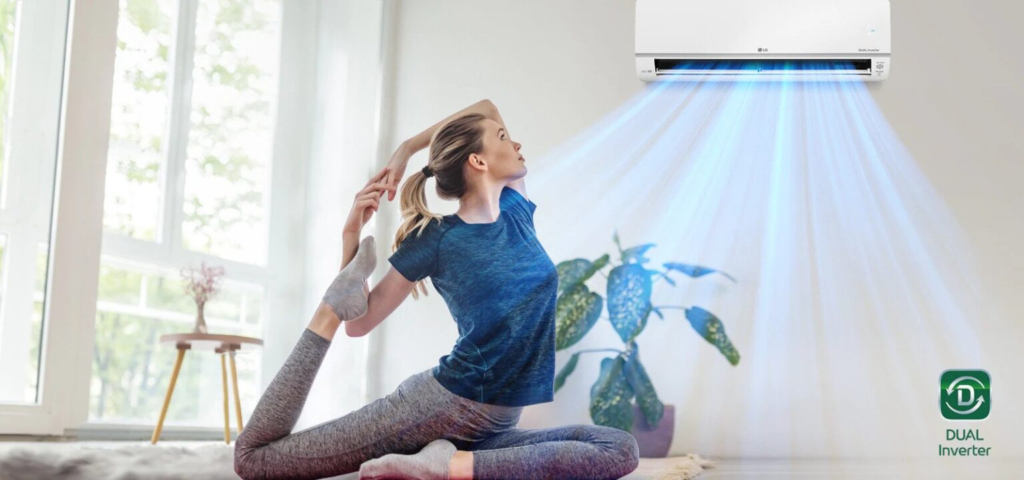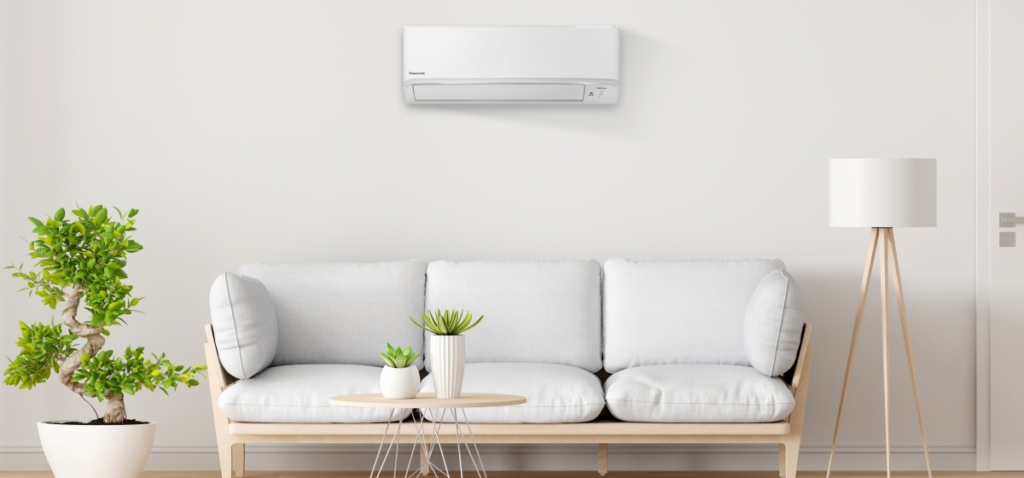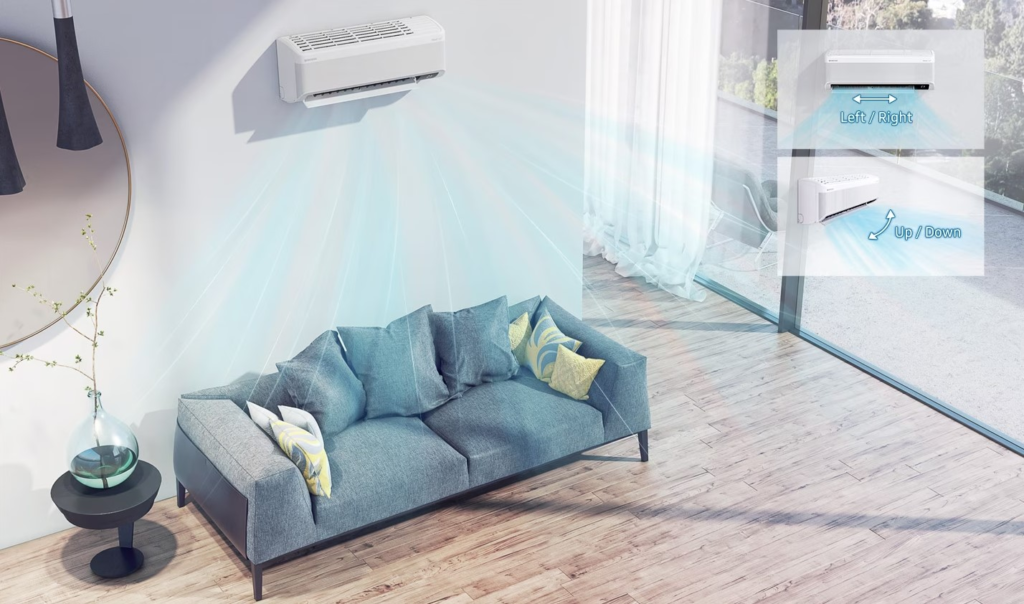Have you ever wondered which air conditioner best fits your home in Malaysia’s tropical climate? With a variety of options available, choosing the right one can be a daunting task. From compact units for small rooms to powerful systems that can cool an entire house, the market offers diverse solutions to suit different needs and preferences.
In this article, we’ll explore the five main types of air conditioners available in Malaysia, detailing their features, benefits, and ideal usage scenarios. Whether you’re looking for an energy-efficient model, a budget-friendly option, or a high-performance system, we’ll help you make an informed decision to ensure your home stays comfortable all year round.
5 Types of Air Conditioners in Malaysia

Choosing the right air conditioner can significantly impact your comfort and energy bills. Here are the five types of air conditioners available in Malaysia, each with unique features to cater to various cooling needs.
1. Inverter Air Conditioner

An inverter air conditioner is a modern and energy-efficient option that adjusts its cooling capacity by varying the speed of the compressor. Unlike traditional air conditioners that turn the compressor on and off to regulate temperature, an inverter unit continuously adjusts its speed, ensuring a more consistent indoor climate. This technology not only provides better temperature control but also reduces energy consumption, making it a cost-effective choice in the long run. Ideal for homes and offices where air conditioners run for extended periods, inverter ACs offer quiet operation and faster cooling compared to non-inverter models. They are particularly suited for regions with fluctuating temperatures, as they can adapt quickly to changes, maintaining optimal comfort.
Pros
- Reduces power consumption, leading to lower electricity bills.
- Maintains a steady temperature without frequent on-off cycles.
- Produces less noise due to the variable speed compressor.
Cons
- More expensive upfront compared to non-inverter models.
- Repairs and maintenance can be more complicated and costly.
- Can be less durable in areas with frequent power surges.
2. Non-Inverter Air Conditioner

A non-inverter air conditioner operates on a fixed-speed compressor that turns on and off to maintain the desired room temperature. When the temperature rises above the set point, the compressor kicks in at full speed until the target temperature is reached, and then it shuts off. This cycle repeats continuously, leading to a less consistent indoor climate and higher energy consumption. Non-inverter air conditioners are typically more affordable upfront and are suitable for spaces where the air conditioner is used intermittently, such as guest rooms or vacation homes. They are straightforward to install and maintain, making them a popular choice for budget-conscious consumers.
Pros
- Cheaper to purchase compared to inverter models.
- Easy to install and use without complex settings.
- Ideal for rooms that don’t require constant cooling.
Cons
- Less efficient, leading to higher electricity bills.
- Frequent on-off cycles can cause fluctuations in room temperature.
- The constant starting and stopping of the compressor can be loud.
3. Portable Air Conditioner

A portable air conditioner is a versatile and convenient cooling solution that can be easily moved from room to room. These units are self-contained systems that typically include a venting kit to expel hot air through a window or a sliding door. Portable air conditioners are perfect for renters, small apartments, or spaces where installing a traditional air conditioner is not feasible. They offer a straightforward setup and require no permanent installation, making them a flexible choice for temporary cooling needs. Some models come with additional features like dehumidifiers and air purifiers, enhancing indoor air quality while providing cooling comfort.
Pros
- Easily moved and used in different rooms as needed.
- Requires no permanent installation; simply set up and vent.
- Often includes features like dehumidifiers and air purifiers.
Cons
- Consumes more power and cools less effectively than window or split units.
- Best suited for small to medium-sized rooms.
- Noisier than other types of air conditioners due to their design.
4. Ceiling Cassette Air Conditioner

A ceiling cassette air conditioner is a discreet and space-saving cooling solution designed to be mounted into the ceiling. These units are ideal for areas with limited wall space or where a sleek, unobtrusive design is desired. Ceiling cassette ACs distribute cool air evenly across the room through multiple vents, providing uniform cooling without creating drafts. They offer powerful performance and are suitable for larger spaces such as living rooms, offices, or commercial settings. Ceiling cassette units often come with advanced features like remote control operation, timer settings, and adjustable airflow direction, allowing for customised comfort and convenience.
Pros
- Fits flush into the ceiling, saving valuable floor and wall space.
- Distributes cool air evenly across the room, eliminating hot spots.
- Blends seamlessly with the ceiling for a modern and unobtrusive look.
Cons
- Installation may be more complex and require professional assistance.
- Typically more expensive than wall-mounted or portable units.
- Requires a false ceiling or ample space above the ceiling for installation.
5. Ceiling Exposed Air Conditioner

A ceiling-exposed air conditioner is a versatile cooling solution designed for spaces with high ceilings or where aesthetics are less of a concern. Unlike ceiling cassette units, which are recessed into the ceiling, ceiling-exposed ACs are mounted directly onto the ceiling surface, exposing the unit’s internals. These units are often found in commercial settings such as warehouses, factories, or large retail spaces, where functionality and performance take precedence over appearance. Ceiling-exposed air conditioners offer powerful cooling capacity and efficient operation, making them suitable for cooling expansive areas with high ceilings. They typically feature durable construction and are built to withstand heavy-duty use in demanding environments.
Pros
- Designed for cooling large spaces with high ceilings effectively.
- Built to withstand heavy-duty use in commercial or industrial settings.
- Exposed design facilitates easier access for cleaning and maintenance tasks.
Cons
- May not be suitable for spaces where aesthetics are important due to the exposed installation.
- Typically used in commercial or industrial settings rather than residential properties.
- Depending on the model, may produce more noise compared to residential-grade air conditioners.
Conclusion
The diverse range of air conditioners available in Malaysia offers solutions to meet various cooling needs and preferences. From energy-efficient inverter units to portable options for flexible cooling, each type comes with its own set of advantages and considerations. Whether you prioritise efficiency, mobility, or aesthetics, there’s a suitable air conditioner for every space and budget. By understanding the features and pros and cons of each type, consumers can make informed decisions to ensure optimal comfort and energy savings. With the right choice of air conditioner, Malaysians can beat the heat and enjoy cool and refreshing indoor environments year-round.



